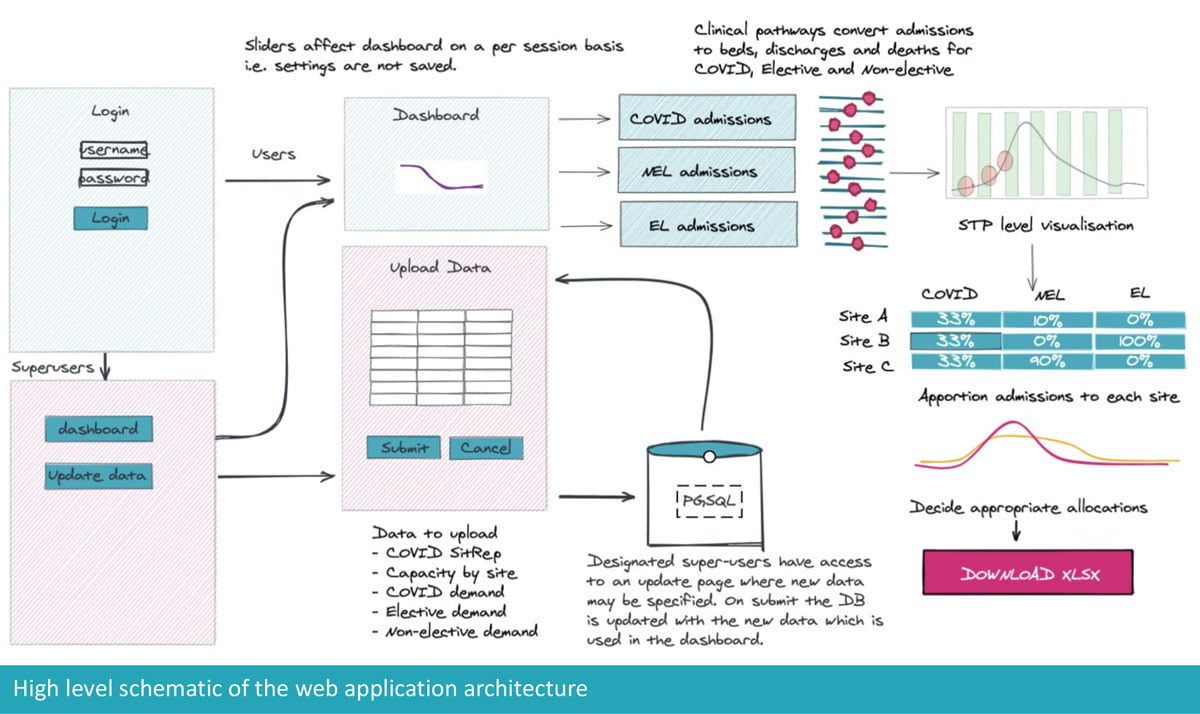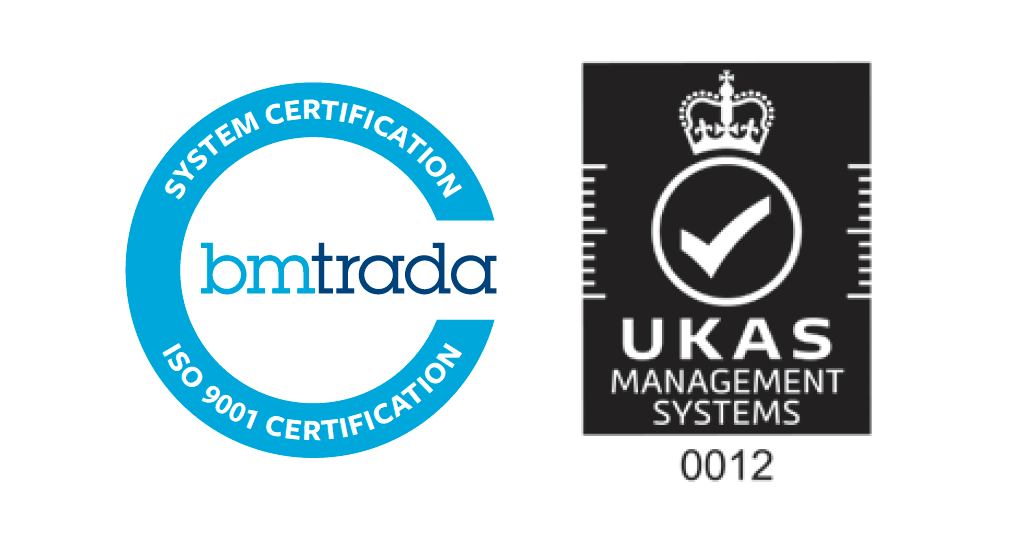Covid Pandemic scenario planning software for London
Building analytical tools to support COVID-19 capacity planning in London
CF supported NHS London in developing a suite of analytical tools that aided STPs to make detailed capacity plans during the initial peak and recovery periods of the COVID-19 pandemic.
- Launched a web application that enables users to model different acute scenarios for COVID and non-COVID activity
- Developed acute and community Excel models that take input data from the web application to allow users to understand acute and community capacity requirements in different scenarios
- Designed features for NHS London users to easily maintain data inputs, upload new COVID admission curves, and provide the option of a consistent approach to capacity planning across London
- Accommodated STP user priorities to quickly create acute scenarios for COVID and non-COVID activity to help plan both acute and community capacity requirements at the site level
- Enabled Community leads and Social care leads to get a London-wide view of historical discharges and predicted demand to adjust capacity appropriately
Problem
STPs in London faced notable barriers in responding to requests from NHS London to provide rapid planning responses to new COVID admissions curves during the start of the pandemic. As COVID-related cases rose, STP leads needed to assess the implications of different COVID admission scenarios; however, there was no consistent methodology of how to translate London-wide curves into capacity requirements at the STP and site levels, and data remained disjointed and siloed.
Approach
STPs leveraged our tools to make informed capacity decisions by conducting scenario planning of various COVID-19 admissions curves. CF worked with NHS London to engage with STPs and understand their specific requirements for responding to capacity planning across different COVID scenarios. We created a web-based application that allowed users to model multiple COVID scenarios, taking into account clinical pathway assumptions for COVID and non-COVID activity. This model produced outputs related to beds, discharge and death figures down the site level.
Solution
We implemented our five-step approach to developing these analytical tools: (1) understanding the needs of key user groups, (2) identifying, collating and validating data, (3) building a model prototype, (4) conducting extensive engagement with users and (5) refining the tools based on user feedback.
- Defining user stories: We developed a set of data-informed user stories that aimed to encapsulate the current issues, which drove the required features of the application. We achieved this through extensive engagement with NHS London and all five London STPs. A sample user story is as follows: ‘As an STP user, I would like to update clinical pathways in terms of LOS and Mortality rate for a fixed set of pathways so that I can adjust the modelling assumption to reflect my observed local patient cohorts’.
- Collecting and validating data: We collated the data input required from a number of sources and passed them through a detailed validation step to ensure data quality before feeding into the model. The input data included:
- National forecast COVID admission curves
- An 18-month scenario projection of non-COVID elective and non-elective admissions by STP using Holt-Winters triple exponential smoothing and 5 years of historical activity
- Capacity data: Data on ITU and general acute beds by site across London
- Actual COVID activity data by site across London
- Developing the web application and associated Excel tools: We generated a web application run via Python and a set of Excel models.
- Web application: We built this application with maximum flexibility to allow users to create acute scenarios for COVID and non-COVID activity, including defining length of stay and mortality for ITU and general acute beds, selecting from multiple COVID admission curves and defining the recovery of non-COVID activity following a COVID peak. Users can save multiple scenarios to a database, easily toggle between them and download output demand and capacity data which serves as input to the Excel models
- Acute and out-of-hospital models: The acute Excel model takes as input the bed requirement for a scenario in the web application and allows site level interrogation of demand requirements against available capacity. The out-of-hospital models take input of the forecast acute discharges for a scenario downloaded from the web application and allows the user to view the implications for community and social care bed demand against capacity for an STP, broken down by site and CCG.

- Engaging with STP users and feature development: We engaged with a range of stakeholders across all five London STPs throughout the development process to prioritise features, ensure usability and identify substantive modifications. This work involved an extensive handover process and additional efforts to incorporate these resources into key planning committees and leadership meetings.
- Providing ongoing support and user engagement: We continue to engage with STP users to understand how they are using the tool and to help identify potential modifications or new features as we learn more about the COVID-19 pandemic and about changes in the ways that health and care leads are expected to conduct their planning efforts.
Impact
A usable suite of analytical tools that equips STPs with the information they need to conduct acute and community capacity planning. By partnering collaboratively with a variety of STP stakeholders throughout the entirety of this process, we have co-created a suite of tools that meets the specific needs of STP leads. We continue to see weekly usage of the tools across several London STPs, and we have received positive feedback regarding its role in influencing critical capacity planning decisions.
Awards and recognition
Our work won the Best Healthcare Analytics Project for the NHS in the HSJ Partnership Awards 2021. Read more here.

Testimonials:
Just wanted to say a huge thank you for all the high quality thinking and hard work the team has put in on this project over the last seven weeks. Its obviously been one of the most intense periods ever in the NHS, and your team has really risen to the challenge and gone above and beyond in supporting London through this. I think the whole systems modelling approach we have developed is genuinely new and exciting, and if we embed it right can be a potential game changer in how we work across organisations and systems.



